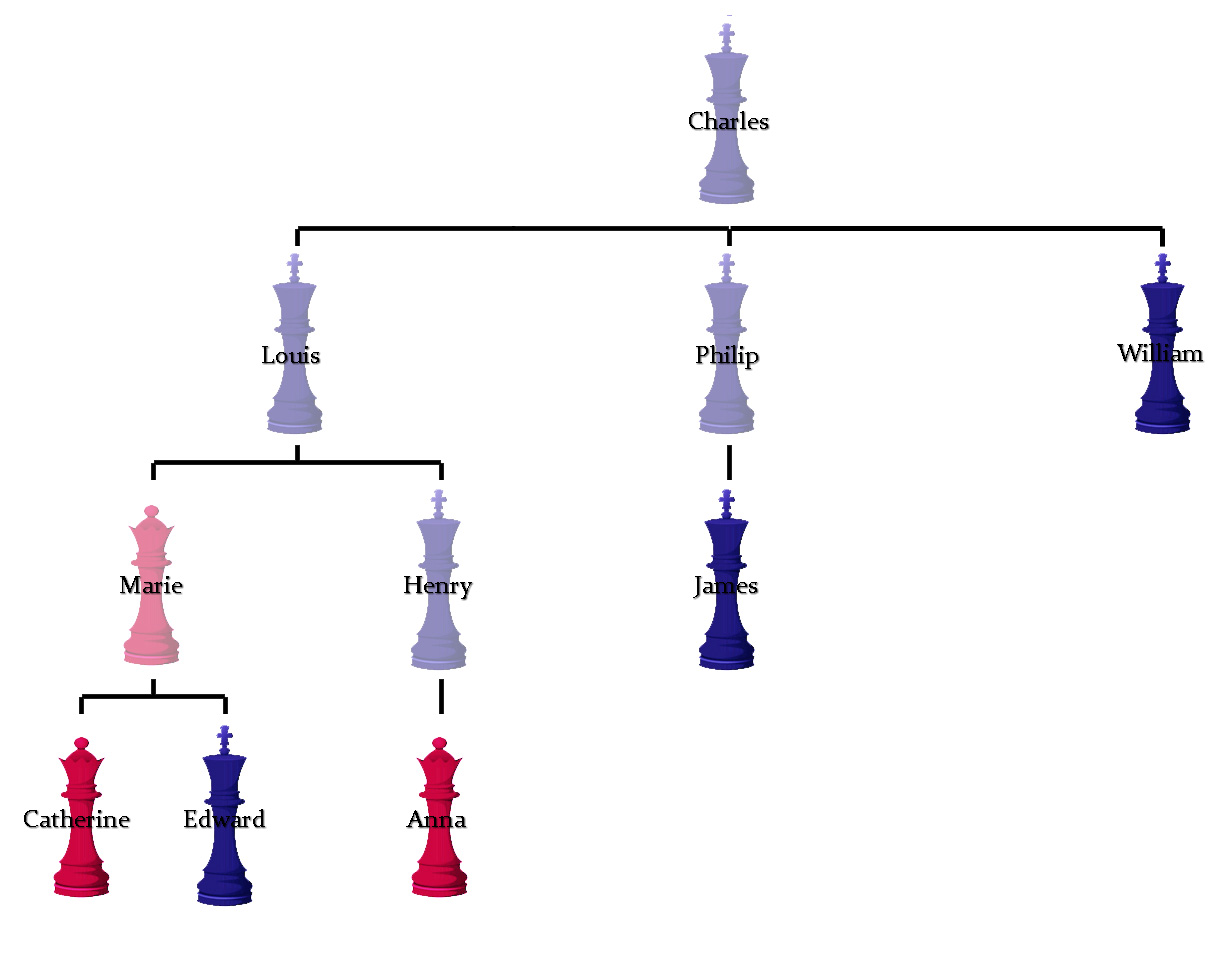The Hundred Years' War
The Medieval Period
Jean-Auguste-Dominique Ingres, Public domain, via Wikimedia Commons
Before he became King of England, William the Conqueror held the title "Duke of Normandy." This technically made him and his successors vassals of the Kings of France. As medieval England was more powerful than France, this was an awkward situation.
In 1328, King Charles IV of France died without a clear heir. Monarchies usually have sophisticated systems of determining succession, or who is next in line to the throne. A few systems became common over the centuries:
This may seem very obscure, but it is extremely important in a hereditary monarchy. A contested throne often results in war. In the fictional example chart below, each system of succession will result in a different monarch:

Charles IV's closest male relative was his sister's son Edward III, who happened to be King of England. Since this was obviously unacceptable to the French, they claimed Salic Law prohibited Edward from inheriting the throne through his mother, and named Philip VI, Count of Valois, as their new king. Edward III accepted this for some time, but maintained that he had a claim to the throne of France.
Philip VI soon confiscated English-held lands in France consolidate his own power, starting the Hundred Years' War. The first phase of the war, from 1337 to 1360, is called the Edwardian War. Edward invaded France, winning significant victories at Crécy in 1346 and later at Poitiers in 1356, gaining direct control over large parts of France.
Philip VI was succeeded by King John II, who was succeded by his own son, Charles V. Charles V launched a second phase of the war, from 1369 to 1389, called the Caroline War. France took back much of the territory they had lost to Edward.
Finally, the third phase of the war was the Lancastrian War, which began with a spectacular English victory at the 1415 Battle of Agincourt. However, French resistance, famously under Saint Joan of Arc, pushed the English almost entirely off continental Europe by 1453.
The war was instrumental in establishing firm national identities for France and England, establishing a rivalry that continued for centuries and separating the two cultures permanently.
